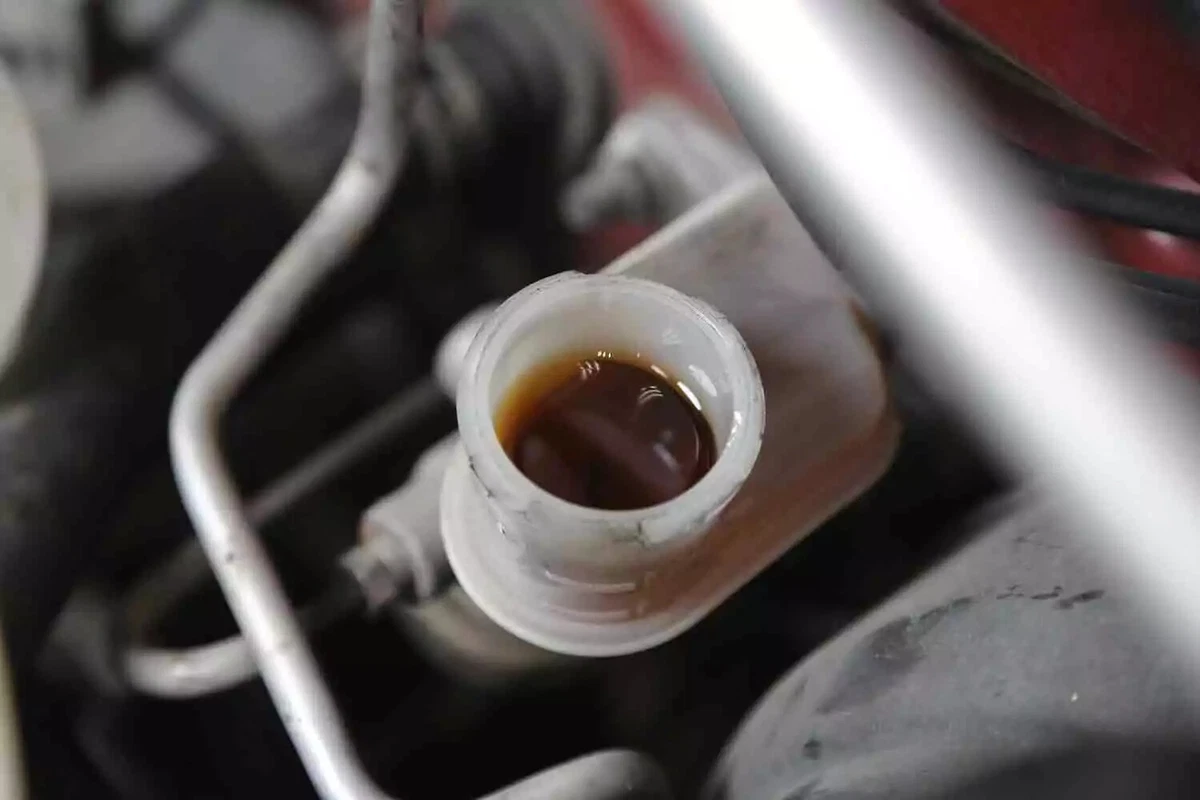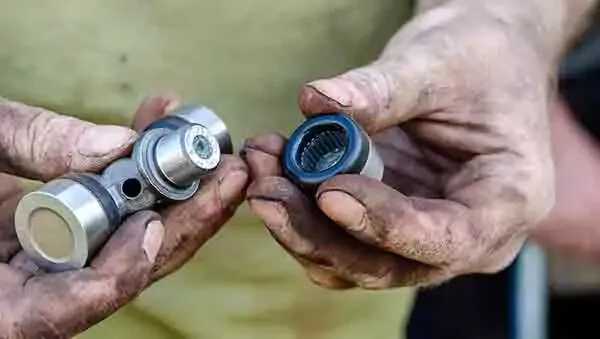To keep the transmission running at its best, change your clutch fluid on a regular schedule. If you clutch starts to feel stiff when you’re shifting gears, it could already be time for a fluid change.
Buying the right clutch fluid is paramount. If your car takes DOT 3 or DOT 4 fluid and your clutch and brake fluids share a reservoir, you can’t put DOT 5 fluid into your car. It is incompatible with your brake system.
Clutch Fluid Is the Same as Brake Fluid

The transmission in this vehicle requires DOT 4 clutch fluid.
If you have an automatic transmission, this article does not apply to your vehicle. We are conveying info about cars with a clutch that manually disengages the engine from the transmission. When you step on the clutch pedal, you can shift gears. This is where clutch fluid comes into the equation.
The hydraulic fluid helps to transfer the force from the clutch pedal to the slave cylinder. For the clutch to work properly, the fluid must be fresh and full. Over time, this fluid loses effectiveness and becomes contaminated, which is why regular changes are important.
How long does clutch fluid last?
It’s important to follow the manufacturer's guidelines with all maintenance schedules. Clutch fluid lasts between two and three years or 30,000 and 45,000 miles. However, driving conditions play a role in how long it holds up. Frequent stop-and-go traffic, aggressive driving, and heavy towing can cause fluid degradation more rapidly.
Signs Your Clutch Fluid Is Going Bad

If the clutch fluid is dark, it’s probably time to drain and refill.
Appearance: Open the cap on the clutch reservoir and take a look. When clutch fluid is old, it becomes dark, dirty, and cloudy.
Grinding gears: Grinding while shifting could indicate that the clutch isn’t fully disengaging.
Low fluid: Over time, the fluid level also gets low, indicating that it’s time to replace it. At the same time, you should make sure the fluid isn’t leaking, which would also cause the level to drop.
Rough or sticky shifting: If the gears feel like they are sticking, the fluid may be degraded to the point that there’s no longer enough hydraulic pressure being applied.
Soft or spongy clutch pedal: When the clutch pedal feels squishier than normal, or it doesn’t come back up to its original position, the fluid may be contaminated.
It’s important to note that many of these symptoms can occur with other clutch failures. However, replacing the clutch fluid won’t hurt even if it’s not the cause of your problem. It’s a great place to start your diagnosis.
How long can you drive with bad clutch fluid?
It’s never advisable to drive with contaminated clutch fluid. Still, you may be able to get away with it for a couple of weeks if there are no symptoms. Just keep in mind that the longer you go without replacing the broken-down fluid, the higher the chances of performance issues. You may experience clutch failure.
Replacing Your Clutch Fluid Is Easy

Unsure if the fluid is bad? A brake fluid test strip lets you know if the fluid is due for a change.
The process for changing clutch fluid and brake fluid is the same. It shouldn’t take more than an hour for the job. You drain all of the clutch fluid from the reservoir, clean the reservoir, fill it back up, and then bleed the air from the system. When the brake fluid and clutch fluid share a reservoir, you can get both jobs done at the same time.
How much does clutch fluid cost?
Expect to pay less than $15 for a 12-ounce bottle of DOT 3 hydraulic clutch fluid. OEM products and synthetic racing fluids cost more, ranging up to $30. The good news is that the job is easy to perform. So, there’s no reason to pay a mechanic for the service, which may save you $70 to $150 for clutch fluid replacement.

Clutch master cylinders are vehicle-specific. This is a SACHS unit for the 20032007 Honda Accord.
Replace the brake fluid at the same time if the clutch fluid share a reservoir. Otherwise, we recommend checking the clutch master and slave cylinders for signs of wear or leakage. That is especially needed if you are noticing trouble with shifting and transmission performance.
Look for corrosion and cracks along the hydraulic lines and connections. Finally, check the clutch pedal adjustment to ensure the pedal operates smoothly and is set properly.
Share your feedback
This article is meant to provide general guidance only. Automotive maintenance, repair, upgrade, and installation may depend on vehicle-specifics such as make and model. Always consult your owner's manual, repair guide for specific information for your particular vehicle and consider a licensed auto-care professional's help as well, particularly for advance repairs.
































